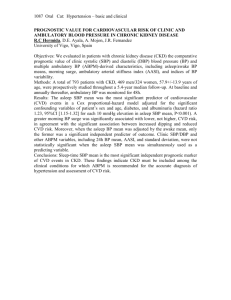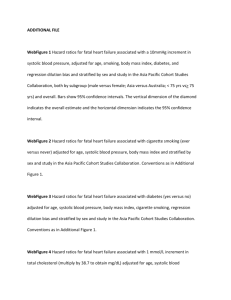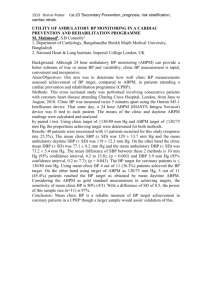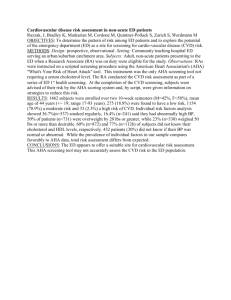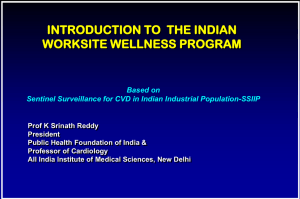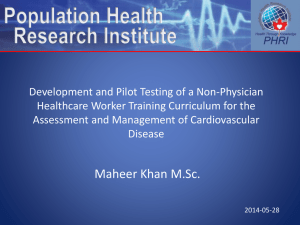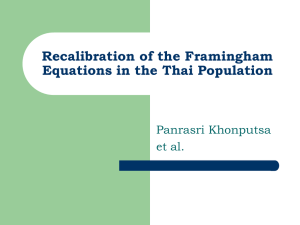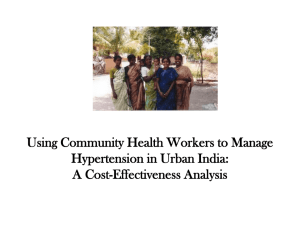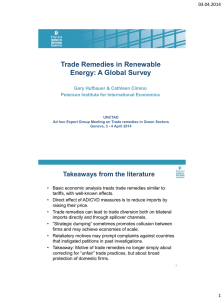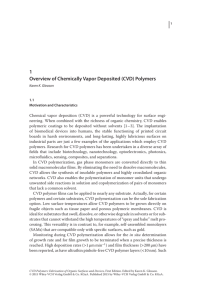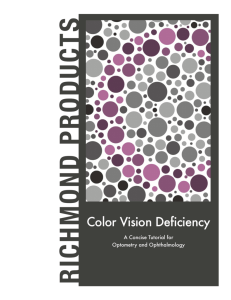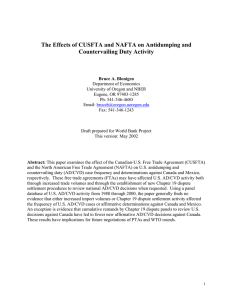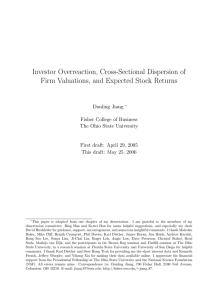asleep blood pressure is an independent
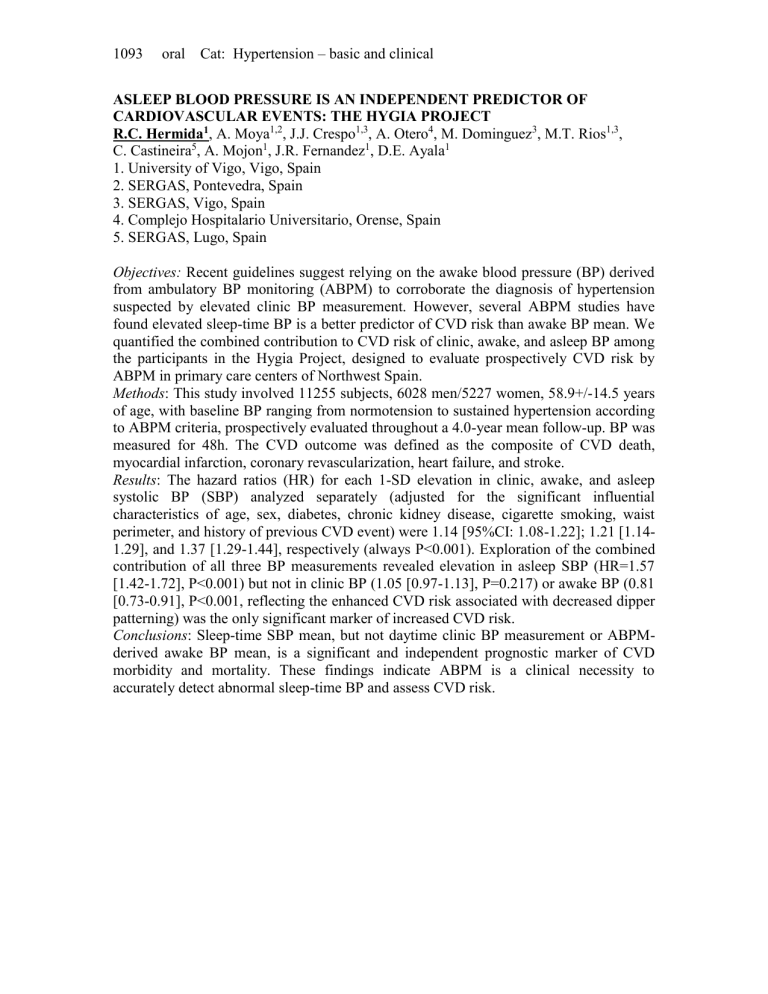
1093 oral Cat: Hypertension – basic and clinical
ASLEEP BLOOD PRESSURE IS AN INDEPENDENT PREDICTOR OF
CARDIOVASCULAR EVENTS: THE HYGIA PROJECT
R.C. Hermida 1 , A. Moya 1,2 , J.J. Crespo 1,3 , A. Otero 4 , M. Dominguez 3 , M.T. Rios 1,3 ,
C. Castineira
5
, A. Mojon
1
, J.R. Fernandez
1
, D.E. Ayala
1
1. University of Vigo, Vigo, Spain
2. SERGAS, Pontevedra, Spain
3. SERGAS, Vigo, Spain
4. Complejo Hospitalario Universitario, Orense, Spain
5. SERGAS, Lugo, Spain
Objectives: Recent guidelines suggest relying on the awake blood pressure (BP) derived from ambulatory BP monitoring (ABPM) to corroborate the diagnosis of hypertension suspected by elevated clinic BP measurement. However, several ABPM studies have found elevated sleep-time BP is a better predictor of CVD risk than awake BP mean. We quantified the combined contribution to CVD risk of clinic, awake, and asleep BP among the participants in the Hygia Project, designed to evaluate prospectively CVD risk by
ABPM in primary care centers of Northwest Spain.
Methods : This study involved 11255 subjects, 6028 men/5227 women, 58.9+/-14.5 years of age, with baseline BP ranging from normotension to sustained hypertension according to ABPM criteria, prospectively evaluated throughout a 4.0-year mean follow-up. BP was measured for 48h. The CVD outcome was defined as the composite of CVD death, myocardial infarction, coronary revascularization, heart failure, and stroke.
Results : The hazard ratios (HR) for each 1-SD elevation in clinic, awake, and asleep systolic BP (SBP) analyzed separately (adjusted for the significant influential characteristics of age, sex, diabetes, chronic kidney disease, cigarette smoking, waist perimeter, and history of previous CVD event) were 1.14 [95%CI: 1.08-1.22]; 1.21 [1.14-
1.29], and 1.37 [1.29-1.44], respectively (always P<0.001). Exploration of the combined contribution of all three BP measurements revealed elevation in asleep SBP (HR=1.57
[1.42-1.72], P<0.001) but not in clinic BP (1.05 [0.97-1.13], P=0.217) or awake BP (0.81
[0.73-0.91], P<0.001, reflecting the enhanced CVD risk associated with decreased dipper patterning) was the only significant marker of increased CVD risk.
Conclusions : Sleep-time SBP mean, but not daytime clinic BP measurement or ABPMderived awake BP mean, is a significant and independent prognostic marker of CVD morbidity and mortality. These findings indicate ABPM is a clinical necessity to accurately detect abnormal sleep-time BP and assess CVD risk.
